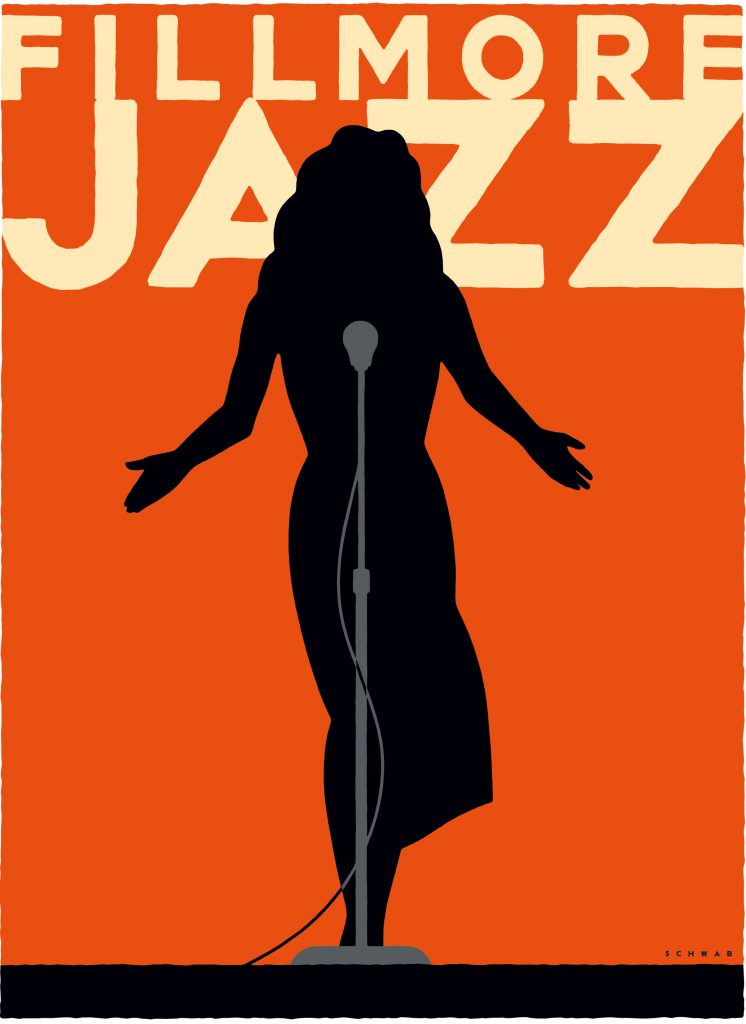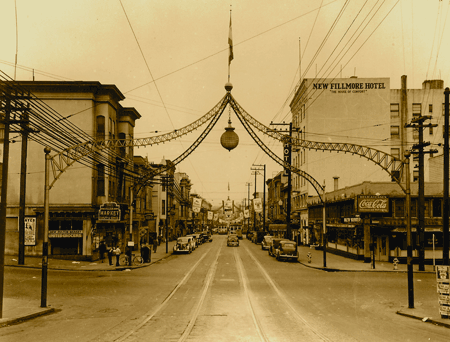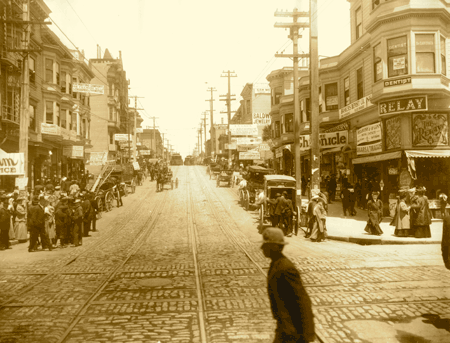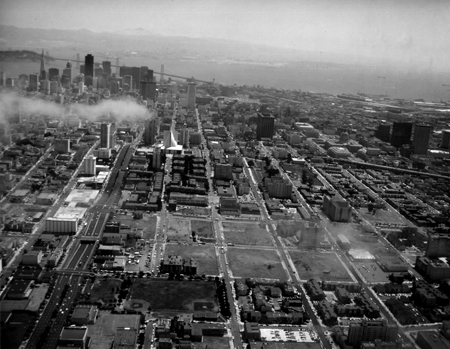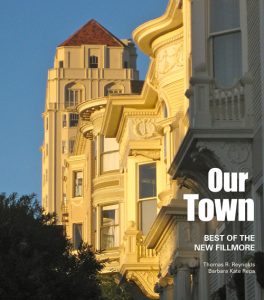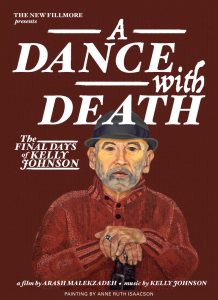By ROBERT F. OAKS
Few if any neighborhoods have proclaimed their “newness” more often than the Fillmore. While other sections of San Francisco have decried the changes to their neighborhoods, the Fillmore has re-invented itself several times and then prided itself on being “new.”
At one time, the Fillmore really was new. In the 1870s, Victorian tract houses began to dot the sand dunes of the “suburbs” in the Western Addition. The residents of the Fillmore were mostly middle class then, although by the turn of the century there were impressive mansions in the growing residential neighborhood around upper Fillmore. Except perhaps for a few servants, the residents were almost exclusively white, including a substantial Jewish population.
The first “new” Fillmore occurred after the disastrous 1906 earthquake and fire, which destroyed downtown San Francisco while leaving the Fillmore district largely untouched. Practically overnight, Fillmore Street became the new hub of the city as businesses and government offices of all kinds relocated here. Also for the first time, many residents of Japanese heritage moved into the neighborhood, their homes in Chinatown and South of Market destroyed by the fire.
Merchants were soon referring to Fillmore Street as “the new Market Street.” Large electrically lit iron arches were built across the intersections to provide grandeur. But despite attempts to retain major businesses and institutions, the larger ones moved back downtown after a couple of years. Only neighborhood businesses stayed. So did the Japanese.
The next “new” Fillmore occurred during World War II. The forced relocation and internment of all Japanese — citizens and non-citizens alike — resulted in boarded up businesses and empty homes and apartments. At the same time, African Americans, seeking lucrative war-time jobs, began moving from the south into the newly empty buildings, greatly increasing the small black population in the neighborhood.
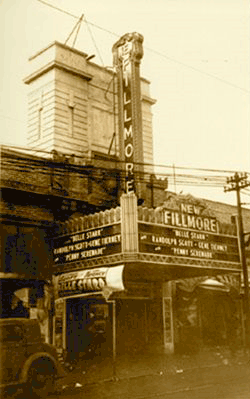
The New Fillmore Theater at Fillmore and Eddy.
Not only did the racial composition of the Fillmore change, but so did the nightlife. The Fillmore had been an entertainment center since early in the century — offering theaters, cinemas, roller and ice skating rinks and a major amusement park called the Chutes. The new African American residents added jazz. By the time the war ended, the Fillmore was a major jazz center and remained one into the 1960s, with many clubs attracting both musicians and a clientele from all over the Bay Area and far beyond.
By the end of the 1950s, however, there was little that was “new” in the Fillmore. If anything, many people regarded the neighborhood as both old and run down. City officials saw the Fillmore as a prime target for redevelopment. While the goals seemed lofty, the reality of redevelopment included the forced relocation of thousands of residents — most of them African American — and the failure of many businesses. Aging Victorian houses were torn down; a few were physically relocated. Geary Street was transformed into an eight-lane expressway slicing through the heart of the neighborhood.
Entire blocks were leveled to make way for a new “new” Fillmore. A new Japan Center rose in the heart of the Japanese area relatively quickly. But it took 10 years to complete it. In the area south of Geary, it took much longer to replace the housing that was destroyed in the 1950s and early 1960s. Many of the relocated residents had either died or settled elsewhere by the time new housing was available in the massive Fillmore Center.
Today it is definitely a “new” Fillmore, especially south of Geary. Yet there is an attempt to retain some of the old as well. The 2007 opening of Yoshi’s restaurant and jazz club in the Fillmore Heritage Center is helping to bring back jazz and once again draw outsiders into the neighborhood. And the “walk of fame,” with the names of both neighborhood pioneers and historic buildings carved into the sidewalk, also helps preserve the memory of the “old” Fillmore.
Robert F. Oaks is the author of San Francisco’s Fillmore District, published by Arcadia Publishing, from which these photographs are reprinted.


